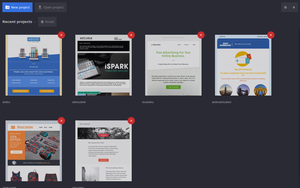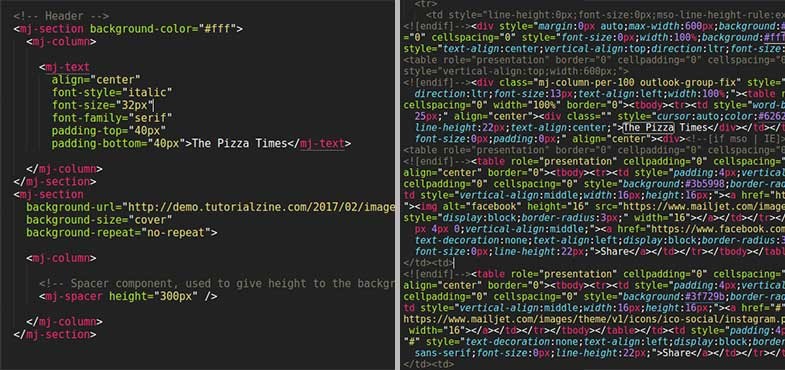
#CONTAIN IMAGE MJML INSTALL#
We'll then add mjml to our project's dependencies with npm install mjml. To get the assets that I'm using for this demonstration, or if you'd rather not follow along on your own, you can clone this public GitHub repository.įirst we'll create an empty directory and run npm init -y to initialize the project. If you don't already have Node.js and npm installed, you can find installation instructions on the Node website. To get started, we'll first create a new JavaScript project. Let's take a look at how we can use MJML to create beautiful, responsive emails by implementing the following design. MJML smoothes over all of these differences with an easy-to-use syntax. This can lead to some quite frustrating debugging trying to determine which CSS rule is causing you to lose all of your styles.Īs a result the most effective way to write HTML emails to ensure that they work across different email clients is to use table-based layouts and minimal CSS. However, unlike normal CSS parsers in the browser, if Gmail encounters an error if throws away all of the styles in the head. Gmail supports only a subset of CSS properties, and will only parse styles in the document's head. * No support for background images in divs or table cells * No support for CSS float of position properties * No support for text shadow * Poor support for margin and padding * Poor support for CSS width and height * Issues with background colors for nested elementsĪnother example is Google's email client, Gmail. This results in pretty abysmal CSS support for emails viewed in Outlook, alongside many frustrating platform-specific quirks: That's right, a word processor used to parse HTML emails. The issue is that each of these clients support different subsets of HTML and CSS - often this difference is quite large.įor example, the desktop versions of Microsoft's Outlook email client use Microsoft Word to render emails. Unlike the web, where a few browsers handle most of the traffic, emails are read in a huge number of email clients. The result is a markup language that abstracts away an entire layer of complexity related to responsive HTML email design.īut why do we need this layer of abstraction? Why can't we just design HTML emails using the same HTML and CSS used throughout the web? Their team has spent years diving deep into the complexities of HTML email and understanding the differences between all the different email clients.

MJML, or Mailjet Markup Language, is an open source project created by the development team at Mailjet. We will implement an email design together step-by-step to demonstrate how MJML can simplify your email development process. In this post we'll tale a look at MJML, a tool we've found useful for creating responsive HTML email designs. Two of the most popular frameworks that we considered were MJML and Foundation for Emails. In these situations having a robust, standardized way of creating emails can be very beneficial. Choose a framework when you need to produce many email templates with shared components, and when you will have multiple developers working with your email templates. The third and, in our opinion, most robust option is to use an email framework. A popular one is Email Boilerplate on GitHub.

This is a viable option if your emails designs are very simple and you are alright with some degree of degradation on older email clients.Īnother option is to find a boilerplate HTML template somewhere online that can be modified to fit your needs. The first, and least ideal, is to build out our emails from scratch. Luckily we have options when it comes to creating responsive HTML emails. Some don't even support HTML, which can cause email delivery issues.Īnd making your emails responsive for mobile devices? You'll need pretty deep understanding of the differences between all of the different email clients to land on a one-size-fits-all email design.

There are a lot of email clients out there, and they all parse HTML a *little* bit differently. The unfortunate truth is that crafting emails in HTML can still be a tedious and time-consuming task.


 0 kommentar(er)
0 kommentar(er)
